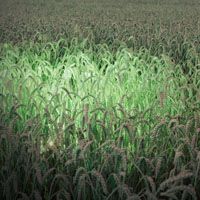Power plant
Following the accident at Chernobyl Nuclear Power Plant in 1986, the surrounding area remains substantially contaminated with radioactive isotopes. A study into the adaptations of the surrounding plant life has suggested that the plant proteomes remain largely unchanged by the radio contamination.

Following the accident at Chernobyl Nuclear Power Plant in 1986, the surrounding area remains substantially contaminated with radioactive isotopes. A study into the adaptations of the surrounding plant life has suggested that the plant proteomes remain largely unchanged by the radio contamination.1
The explosion at Chernobyl released large quantities of radionuclides into the environment. Since then the situation has stabilized into one of persistent low-dose chronic exposure, which the local flora and fauna have adapted to. Previously, genomic and proteomic approaches have been applied to study these adaptations but this study employed high-throughput quantitative methods for protein identification. Flax seeds were grown on contaminated ground before a total protein fraction was isolated from mature seeds and analysed using 2-dimensional electrophoresis combined with tandem-mass spectrometry. Surprisingly, radiation exposure had relatively little effect on the protein levels in the plants, with only about 5% of the proteins altered, researchers noted. UHPLC with MSE was applied to these 35 proteins and allowed researchers to identify 28 of them. Among them were proteins involved in cell signalling or chemical communication, and the team suggests this may be what allows the plants to shrug off radioactivity.
1. K. Klubicová, Environ. Sci. Technol., 44, 6940–6946 (2010).
This story originally appeared in The Column. Click here to view that issue.
Characterizing Plant Polysaccharides Using Size-Exclusion Chromatography
April 4th 2025With green chemistry becoming more standardized, Leena Pitkänen of Aalto University analyzed how useful size-exclusion chromatography (SEC) and asymmetric flow field-flow fractionation (AF4) could be in characterizing plant polysaccharides.
Analytical Challenges in Measuring Migration from Food Contact Materials
November 2nd 2015Food contact materials contain low molecular weight additives and processing aids which can migrate into foods leading to trace levels of contamination. Food safety is ensured through regulations, comprising compositional controls and migration limits, which present a significant analytical challenge to the food industry to ensure compliance and demonstrate due diligence. Of the various analytical approaches, LC-MS/MS has proved to be an essential tool in monitoring migration of target compounds into foods, and more sophisticated approaches such as LC-high resolution MS (Orbitrap) are being increasingly used for untargeted analysis to monitor non-intentionally added substances. This podcast will provide an overview to this area, illustrated with various applications showing current approaches being employed.












